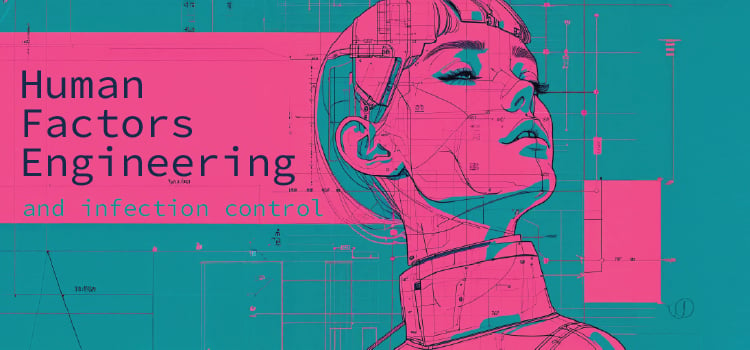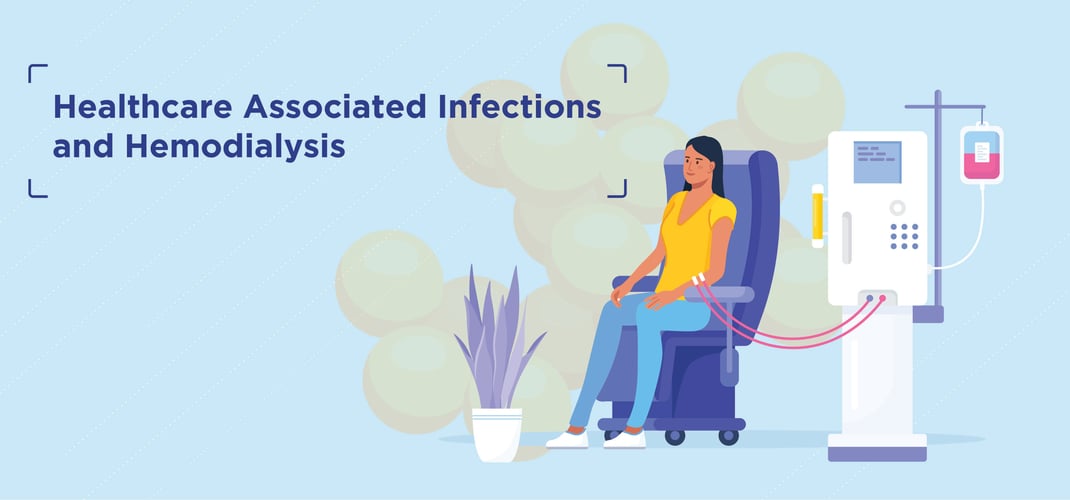Human Factors Engineering and Infection Control

Infection control is often viewed through a clinical lens, focused on pathogens, protocols, and products. But there's another critical element at play: the people who carry out those protocols every day. This is where human factors engineering (HFE) comes in. By designing healthcare environments, tools, and systems with real human behavior in mind, we can reduce errors, improve compliance, and strengthen infection prevention strategies from the ground up.
What Is Human Factors Engineering?
Human factors engineering is the science of optimizing the interaction between people and systems. It’s rooted in psychology, design, and engineering, and it focuses on understanding how humans think, move, make decisions, and sometimes, make mistakes.
In a healthcare setting, HFE aims to design workflows, tools, and environments that:
- Support ease of use
- Reduce cognitive load
- Minimize the chance of error
- Encourage correct behavior without relying solely on vigilance or training
It’s not about "fixing" people—it’s about designing better systems for people.
Why Does Human Factors Engineering Matter for Infection Control?
Infection control often depends on consistent human action: hand hygiene, PPE use, environmental cleaning, sterile technique. Yet we know from decades of research that humans are not perfectly consistent. We forget. We get interrupted. We take shortcuts under pressure. These are not signs of incompetence—they are signs of a system not fully aligned with how people work.
Here’s where HFE can make a difference:
1. Improving Hand Hygiene Compliance | Locating sanitizer dispensers where they’re most convenient, not just where there’s wall space; Using visual cues and reminders in high-traffic areas; Designing sinks and soap dispensers that are intuitive and fast
2. Reducing Touchpoints | Replacing frequently touched surfaces with materials like EOScu that actively reduce bioburden; Automating doors, soap dispensers, and trash cans; Simplifying workflows to reduce the need for unnecessary contact with equipment or surfaces
3. Designing Better PPE Workflows | Making donning and doffing stations more intuitive and less cluttered; Using clear signage and mirrors to support correct PPE technique; Implementing visual checklists or guides at the point of use
4. Preventing Environmental Cleaning Errors | Standardizing color-coded materials to avoid cross-contamination; Structuring cleaning protocols that align with actual staff routines; Using checklists or digital tools that reduce cognitive load
EOSCU and Human Factors: An Example of Passive Error Prevention
One of the principles of human factors is the idea of "forcing functions": Design features that make it easier to do the right thing or harder to do the wrong one. EOSCU’s self-sanitizing surface acts as a kind of forcing function in the infection control landscape. It doesn’t require a human to remember to clean it or apply disinfectant; it continuously works in the background, reducing bacterial contamination where human factors are most unpredictable.
The Bottom Line
Human factors engineering reminds us that the healthcare environment isn’t just a backdrop. I’s an active player in infection control. By aligning protocols and technologies with real-world human behavior, we can reduce the burden on staff, improve patient safety, and create healthcare systems that are both resilient and realistic.
As we continue to fight HAIs and antimicrobial resistance, designing for humans—not just pathogens—may be one of our most powerful tools.
![EOScu Logo - Dark - Outlined [07182023]-01](https://blog.eoscu.com/hubfs/Eoscu_June2024/Images/EOScu%20Logo%20-%20Dark%20-%20Outlined%20%5B07182023%5D-01.svg)

![[infographic] Modes of Transmission Download and share!](https://no-cache.hubspot.com/cta/default/216314/interactive-178287789067.png)



